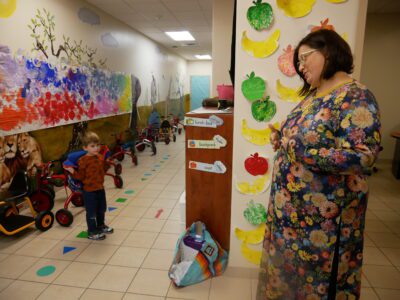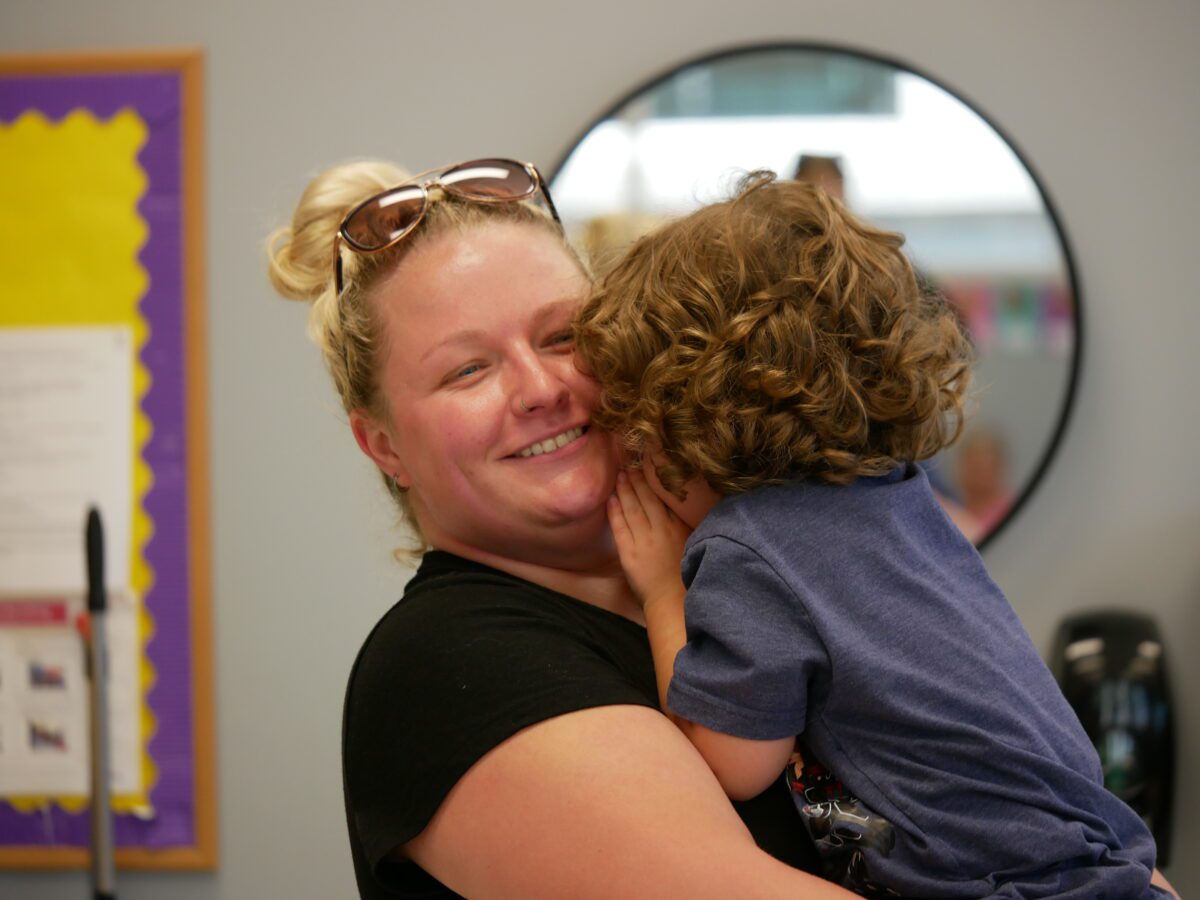
|
|
Like other community colleges across the state, Cape Fear Community College (CFCC) is all about filling local workforce needs. That’s what is driving an effort to triple the size of CFCC’s nursing program, President Jim Morton told EdNC on a recent visit to campus.
The college wants to go from graduating 65 new nurses a year to 210. That means expanding facilities and attracting new students, but it also means ensuring those who start the program actually finish, Morton said.
“When you look at trying to move those numbers, you’ve also got your attrition rate,” he said. “We’re losing like 40%. OK, well, why?”
CFCC surveyed students to find out. In nursing and other programs, those students said a lack of affordable child care was a major barrier to learning and graduating.
Sign up for Early Bird, our newsletter on all things early childhood.
“When you identify these barriers, let’s be creative and see how we can address them,” Morton said.
Solving a nationwide child care crisis is too much for one college to tackle. But that hasn’t stopped Morton and other leaders from asking what they can do.
Morton started having conversations with the college’s foundation and other community members. Providing child care at no cost to students was a priority, he said.
Enter a distinctive financial opportunity: the $1.3 billion New Hanover Community Endowment, created by the New Hanover County Board of Commissioners from the sale of New Hanover Regional Medical Center to Novant Health in 2020. The endowment is focused on education, social and health equity, community safety, and community development.
The college applied for a grant from the endowment while community donors committed to matching those funds. The endowment and the donors each gave $250,000 for the college to open a free drop-in child care program for students.
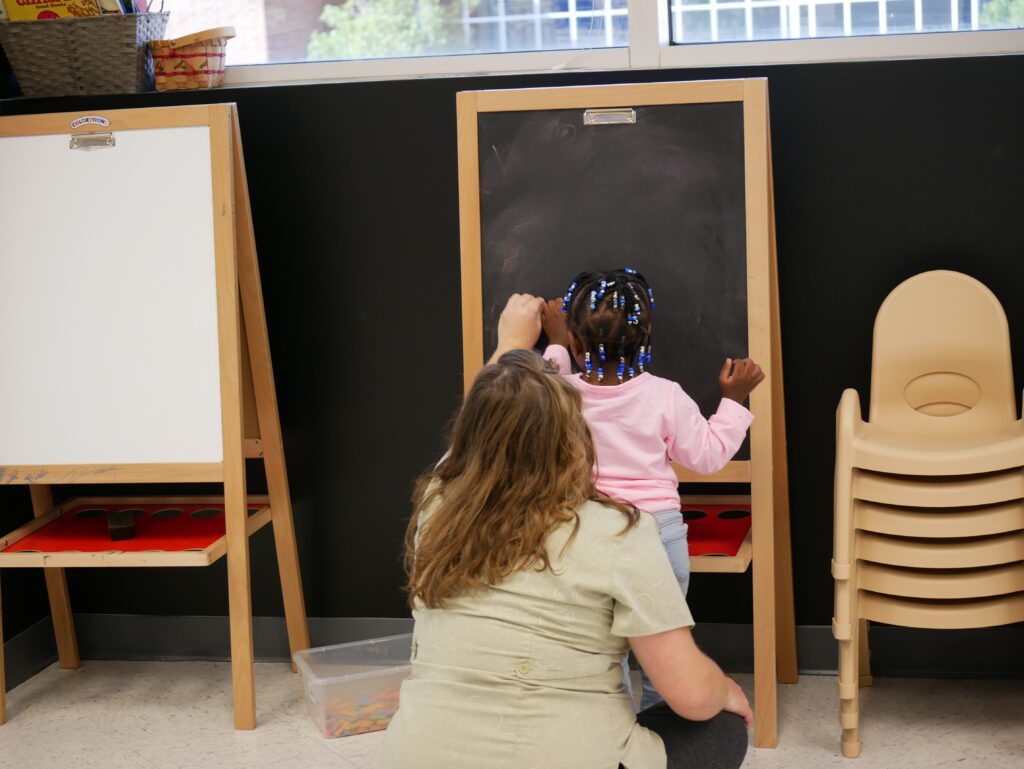
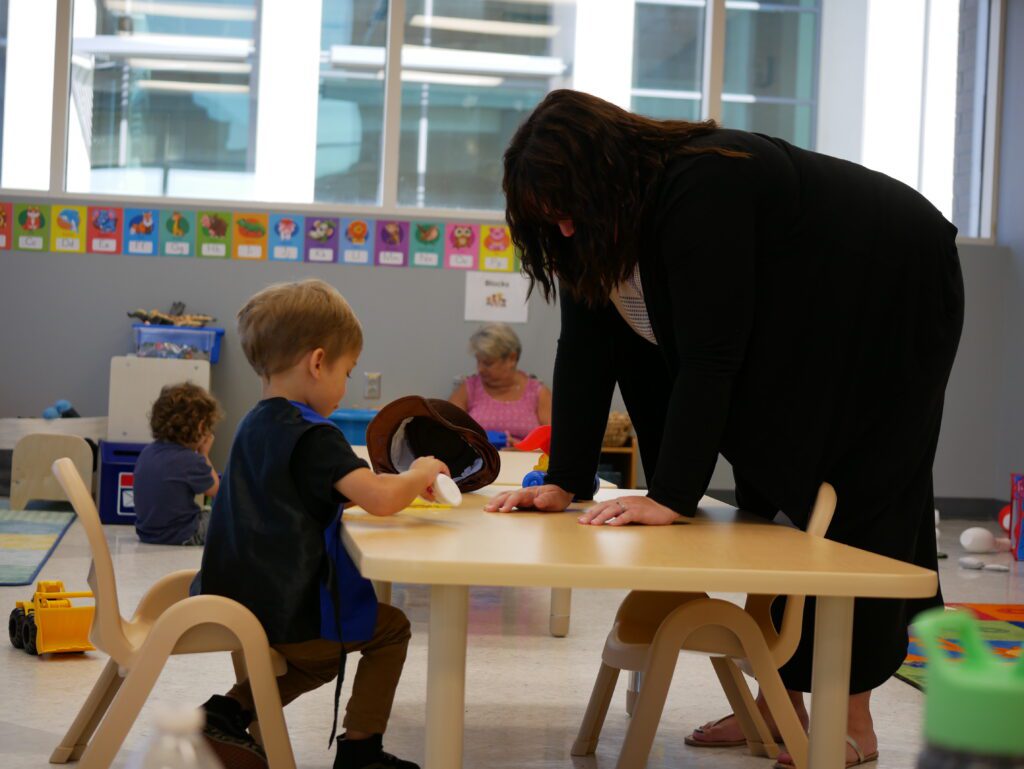
The college launched the program this semester, becoming the only community college to provide free child care for up to four hours per day while parents and caregivers attend class, take tests, or study. In January the program will move to a larger space, increasing its capacity from 20 to 40 children.
“Even impacting a few students, being able to help them change their lives, is immeasurable,” said Mary Ellen Naylor, dean of health sciences at the college, who oversees both the drop-in program and Bonnie Sanders Burney Child Development Center, the full-day on-campus child care center. “This will allow us to touch so many students and help them on their journey to success.”
‘Would anyone show up?’
Between the state application process, hiring staff, securing a location, and setting up the classroom, college leaders got the program ready just in time for fall semester. They decided a “soft launch” would be smart.
“We kind of started off with a pilot in mind; it was temporary space and not knowing, would anyone show up?” Morton said. “You always hear that as being a barrier for students, but was that the reality? But gosh, even the first day, students showed up.”
On the Wednesday in October of EdNC’s visit, one of those students was Bria Cromartie, who dropped off her 4-year-old daughter, Maxlynn McCall, while Cromartie was in class.
The program is not an everyday routine for Cromartie and her daughter, who is normally in pre-K at a public elementary school. But juggling school and child care arrangements, on top of work and other life needs, often means that routines need flexibility. The day before, Cromartie needed the drop-in option because of a dentist appointment. On this day, Maxlynn’s school was out for a teacher workday.
“I’m a single mom, so it’s so fortunate for me, because I can kind of balance my school schedule,” Cromartie said. “And then I can bring her to school with me. This morning, I was driving to school and looking back there to see her. It’s refreshing.”
Every Friday, registration opens for parents and caregivers to reserve spots for the following week. A valid student ID and class schedule are required for registration.
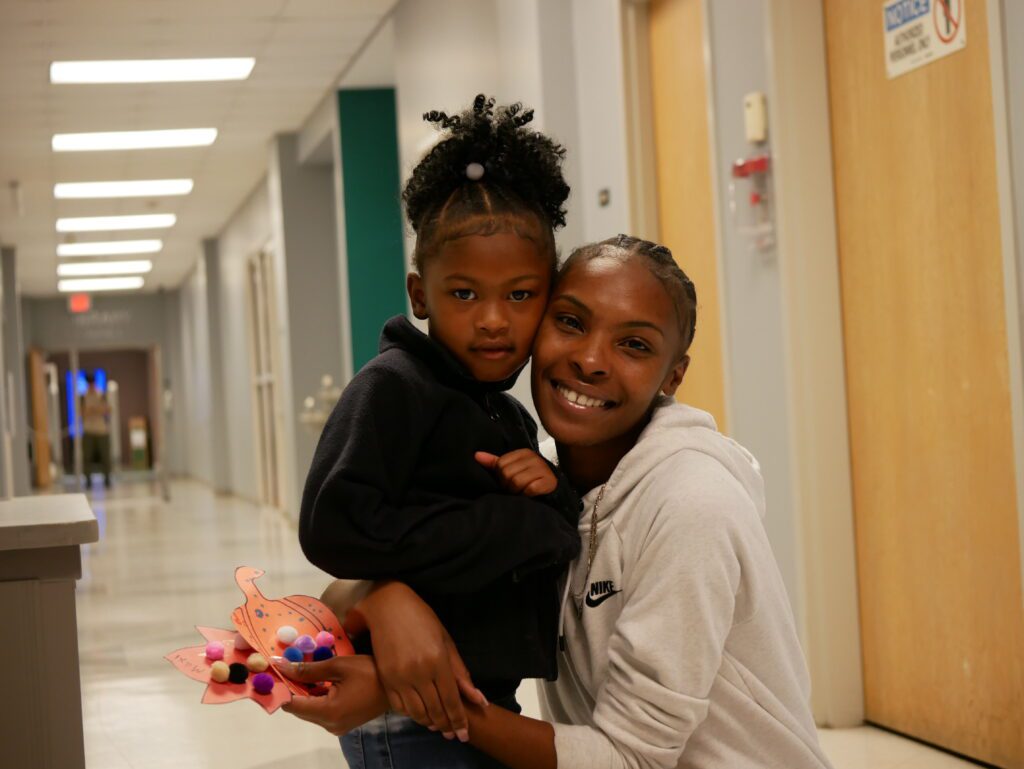
Cromartie is studying advertising and graphic design. Her face lit up talking about the digital tools she’s learning and figuring out exactly how to channel her creative talents.
“I’m trying to figure it out, but I am, slowly but surely,” she said. “I’m really excited about it.”
Krystle Malcolm, a mother of four who is studying ceramics and painting, has been consistently relying on the drop-in program for her 3-year-old son, Mavryk.
After a long break from school during which Malcolm was homeschooling her children, she decided she wanted to go back to school to work toward her dream of opening a ceramic studio. But the cost of child care for Mavryk was going to be an issue.
“I was gonna be paying like over $100 a week for drop-in care for just four hours a day, four days a week,” she said. “So it was gonna be insane. One of my classes starts at 9 a.m. I’ve got to fight all that morning traffic and get him signed in somewhere, plus trying to find parking. A regular drop-in care place was just gonna be a nightmare.”
Malcolm raved about the teachers at the Cape Fear program and assistant director Lindsay Sanderson, to whom Mavryk quickly warmed up. “It’s been freaking awesome,” she said. She also has brought her school-age children to the program when the public school schedule does not align with Cape Fear’s.
She’s excited about the possibilities the program has opened in her own life, and the potential for other students.
“Once the word gets out even more, and if other colleges do it as well, a lot more people would probably go to school,” she said. “It would open up more doors for a lot of people.”
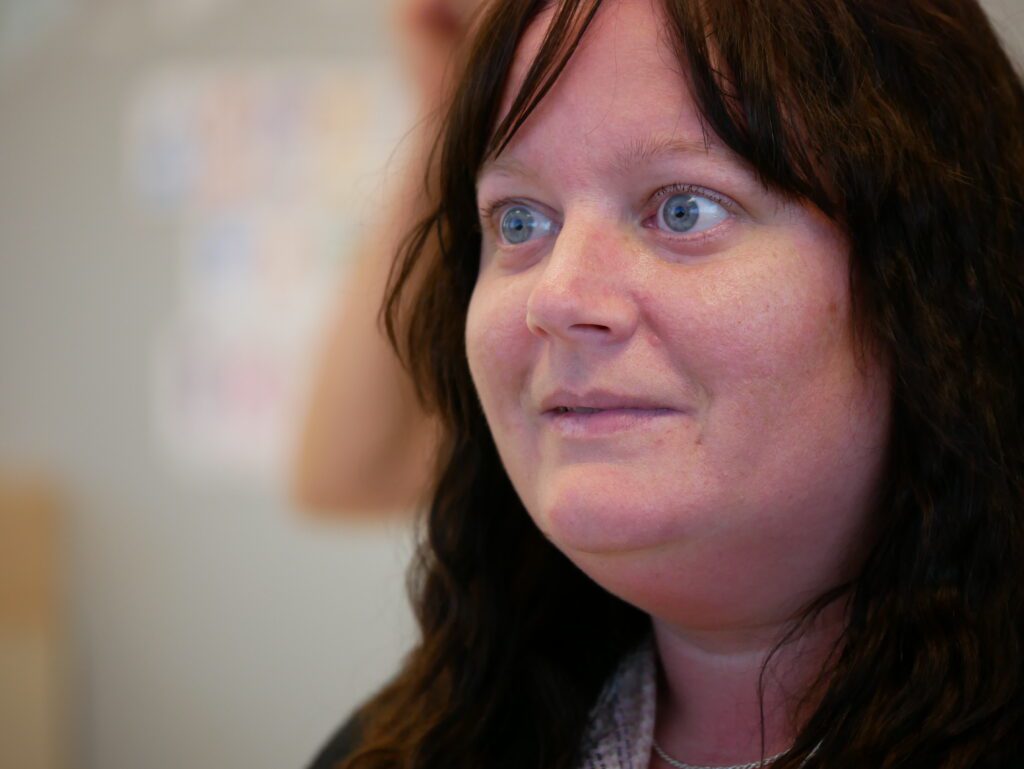
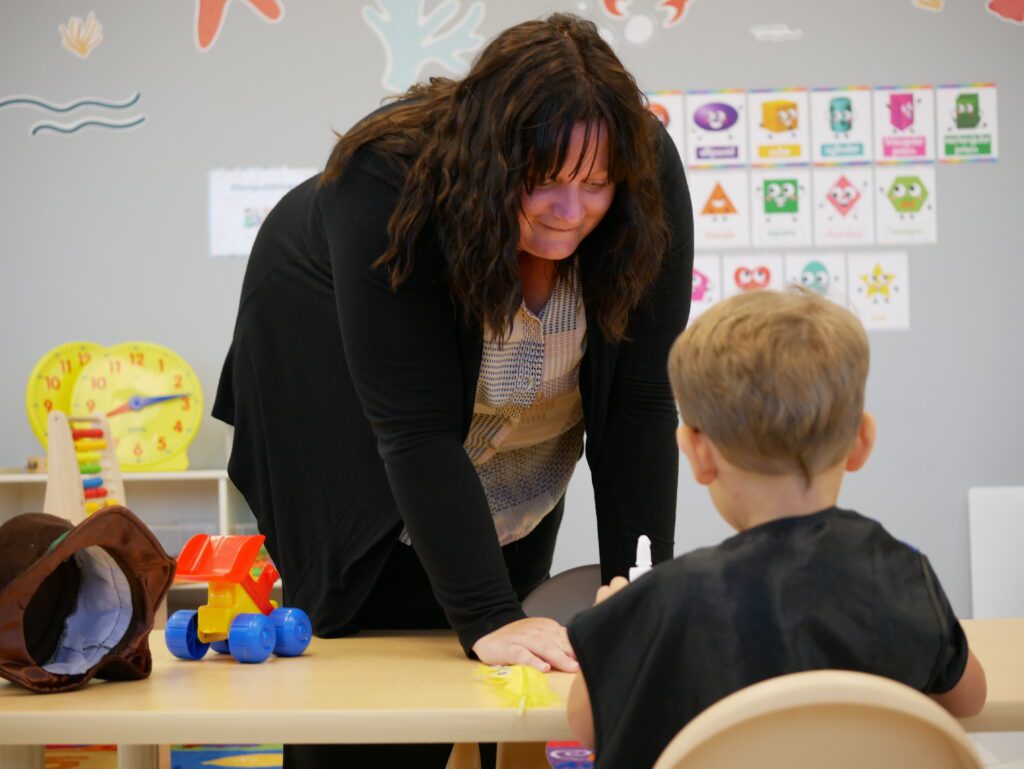
Sanderson said she has seen the program help students stay in school — and get more out of it.
Sanderson is able to form another trusted relationship with students and connect them to the right person or resources at the college if they need other help to stay in school.
And she sees the program encouraging in-person learning, she said.
“I have one parent that went through an online class because she was going to be at home with her kids, and the class was super hard,” Sanderson said. “So she’s already pre-registered for next semester in-person, because now she can bring her son here. She’s like, ‘I cannot do science online.’ I’m like, ‘Me neither.'”
Encouraging ‘a new pool of people’
Attendance has fluctuated throughout the semester, Sanderson said. On the day of EdNC’s visit, fewer than 10 children were in the room. The day before, Sanderson said, 13 children attended. There were days with higher attendance before school-age children started back to school.
Those numbers probably will expand next semester with more space, the ability to serve a wider age range, and a larger marketing push from the college. The temporary location is on the second floor, so the children must be at least 2 years old and walking. The new location will be on the first floor.
“I have like six families that are kind of waiting for their kids to be old enough,” Sanderson said. “They’ve already registered.”
As the college more intentionally gets the word out, they’re hoping the program not only helps with retention, but with recruitment too.
“We’ve had a couple of direct messages that have said, ‘Oh, my gosh, I didn’t register last semester because I didn’t have child care,'” said Christina Hallingse, the college’s director of media relations. “Now that people know, we’re hoping it encourages a new pool of people that we’re hoping come back to school.”
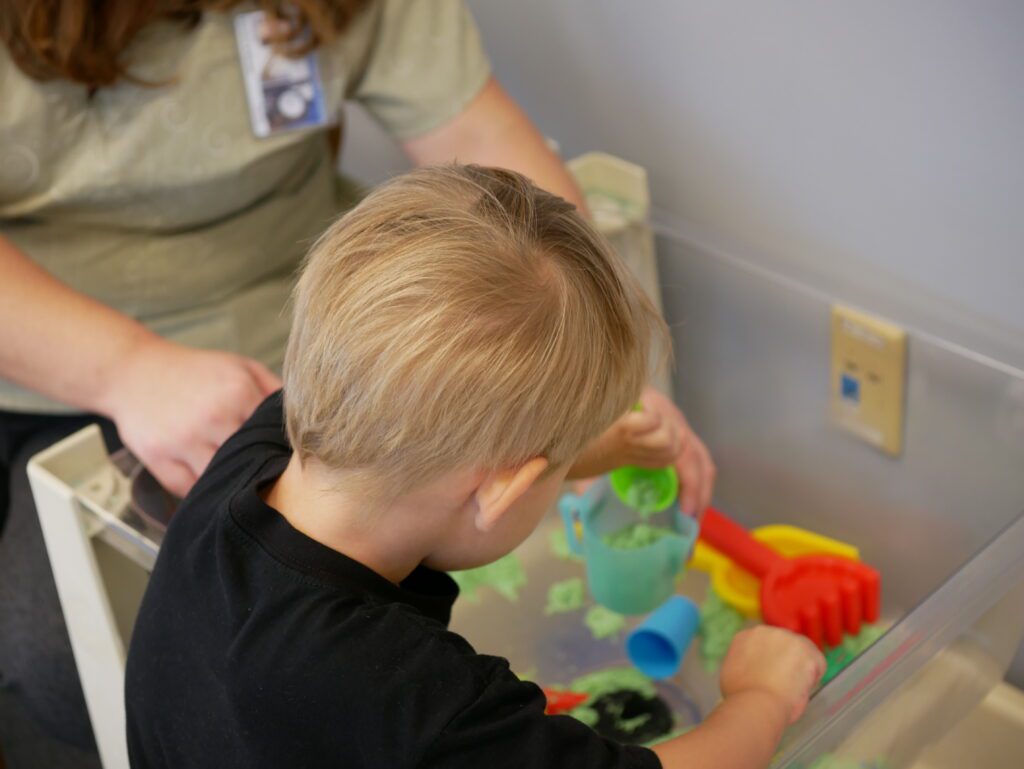
Advisors will let students know about the opportunity as they register for the new semester and build their schedules.
And as the downtown campus learns best practices, the college hopes to expand the option to its three other campuses, Hallingse said. They’ll be applying for another grant from the endowment and looking for other funding options.
“People in the community, once they heard about this, started reaching out to us and saying, ‘We want to make sure this stays free for students,'” Hallingse said.
Down the line, Morton said, the program could draw more state funding from increased enrollment.
“Eventually you can offset some of the expenses by your added enrollment,” Morton said.
He said interested community college leaders should tap into their college foundations, seek corporate sponsors, locate passionate community members, and reach out to local county commissioners for support.
‘We’re not lowering the standards’
Drop-in care is more flexible and affordable than traditional all-day child care for parents. It’s also easier for providers to open. In North Carolina, programs do not have to go through the child care licensing process, with its own rules and regulations, if they limit care to four hours per day.
At Cape Fear, the pre-existing on-campus child care center is licensed, and ranked five stars on the state’s rating system for licensed programs. It also serves as a lab school for students studying to be early childhood teachers.
So when Naylor and others created the drop-in program, much of the policies, procedures, and standards of the program were modeled on the center — even without the state-mandated requirements.
“That is so important,” Naylor said. “We’re not lowering the standards. We’re just making this an option for students at no cost for short periods of time that they can still feel they’re dropping your child off in a quality center.”
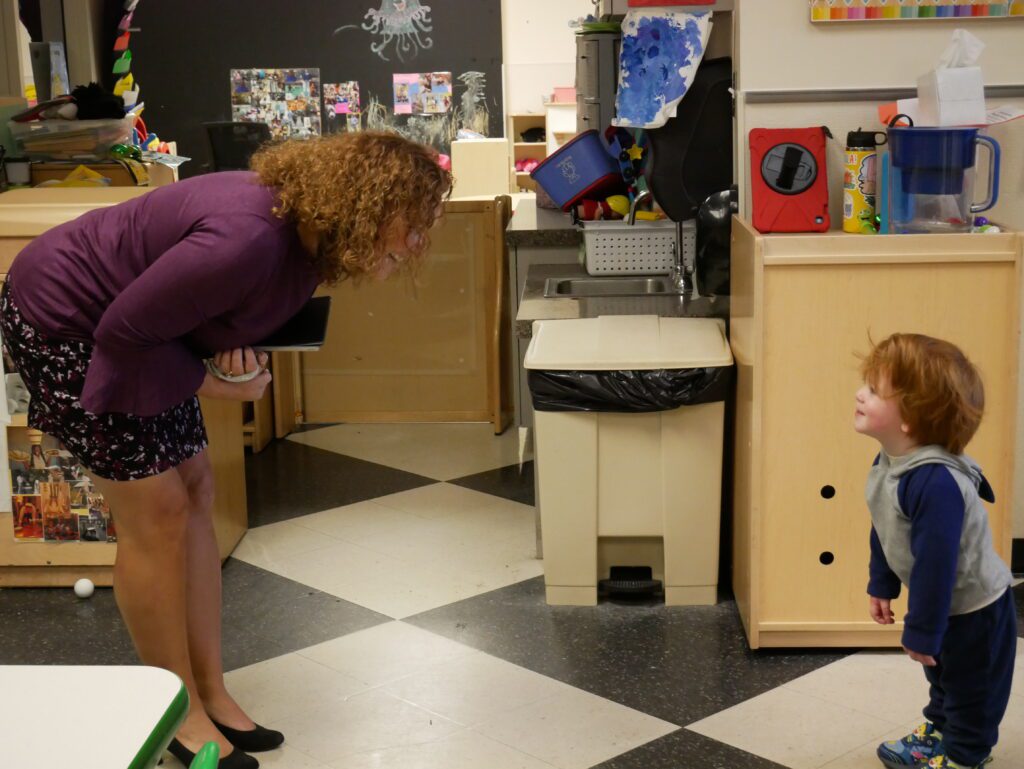
That means staff at the center, including the assistant director, a full-time teacher, and two part-time teachers, have the same credentials that teachers at the center have. The licensed center and the drop-in program also share a director.
They are paid on the college salary schedule and provided with state benefits. That comes to $42,744 per year for the assistant director, $32,000 a year for a lead teacher, and $15 an hour with a maximum of 25 hours per week for part-time teachers.
Public funding from the state and federal level is needed for equitable access to child care and to community colleges, Naylor said. In the meantime, she said, colleges need to “be proactive.”
“They need to look for those funds wherever they might come when it comes to foundations, grants, because we do know, nationwide, it’s a barrier to student success, especially in a community college setting.”
Recommended reading


